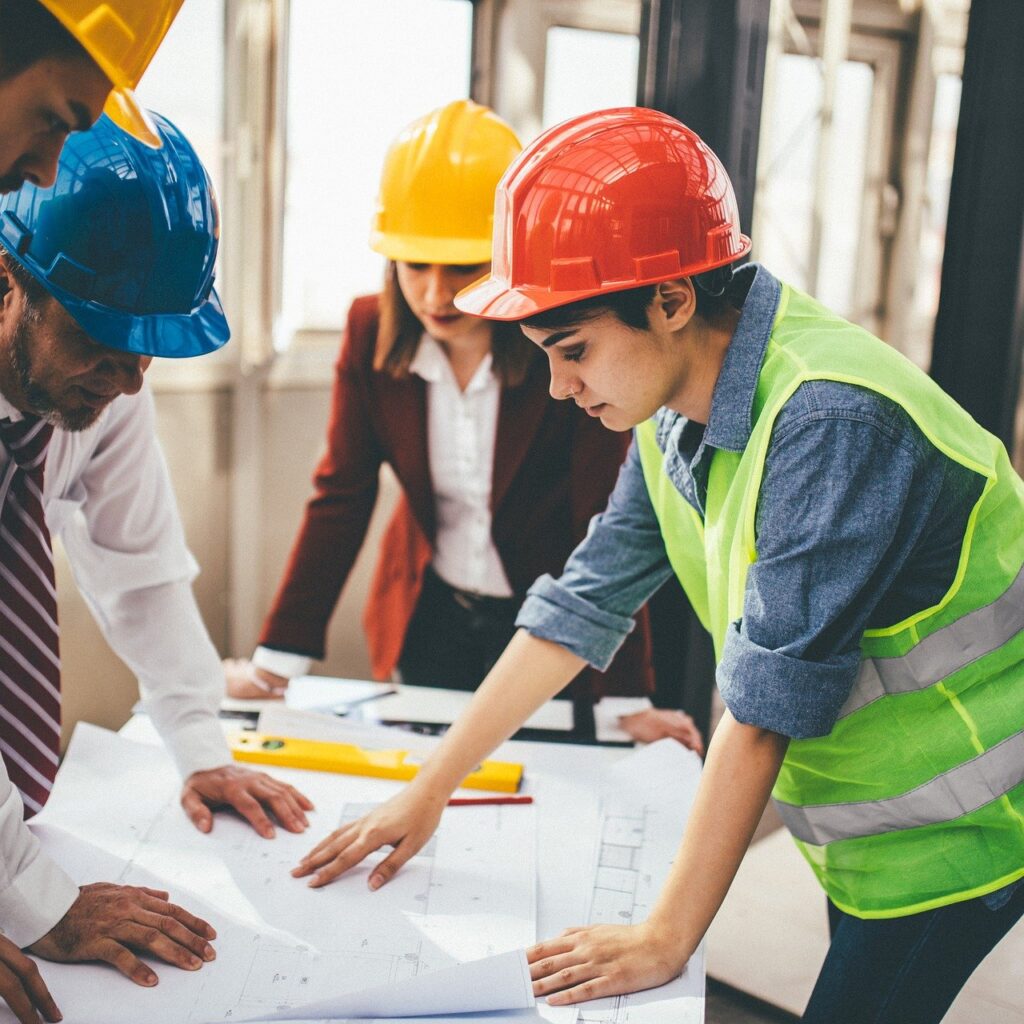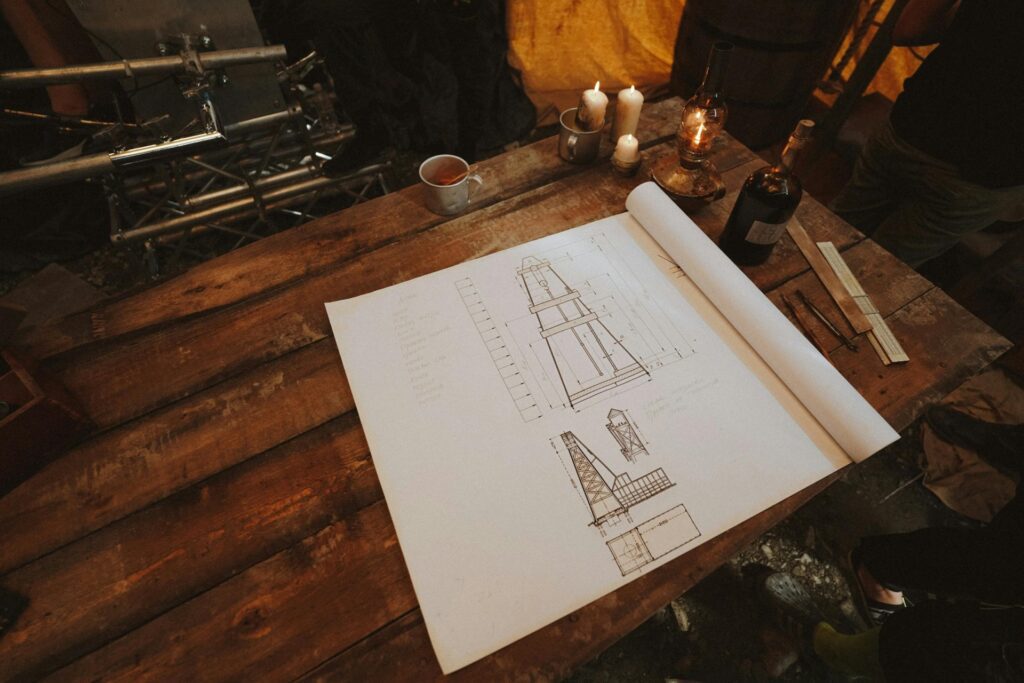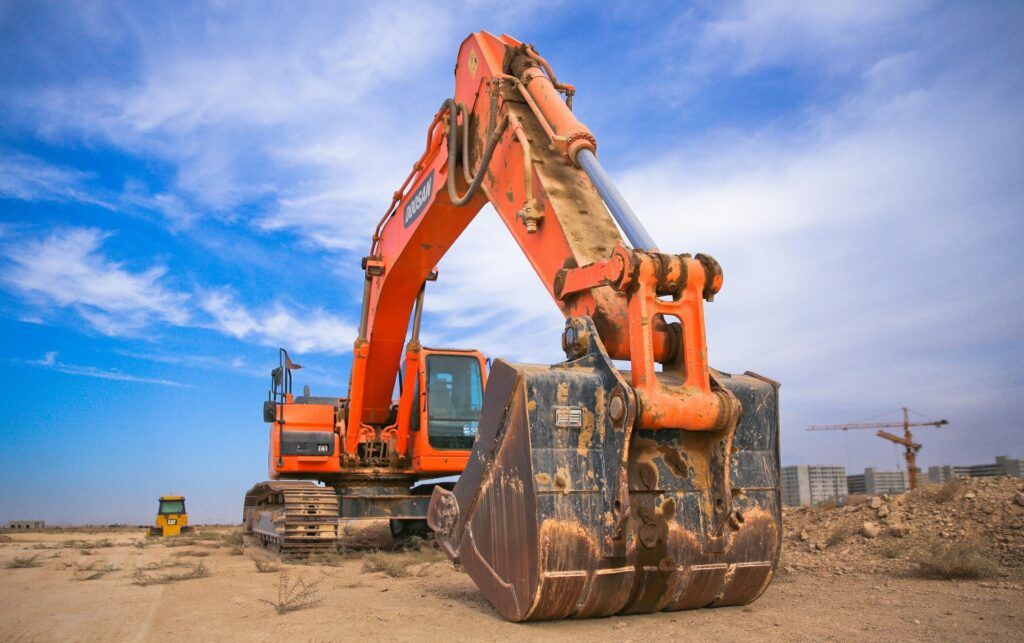Starting a construction project is an exciting journey, but it’s one that begins long before the physical work starts. Ensuring that your land is properly prepared is a crucial first step that sets the foundation for the entire build. Whether you’re constructing a beautiful villa or a commercial property, skipping or rushing the site assessment and land preparation process can lead to unexpected delays, safety concerns, or costly structural issues down the line.

By taking the time to properly assess and prepare your site, you not only avoid these risks but also ensure a smoother, more efficient build. In this article, we’ll guide you through the essential steps to prepare land before construction, focusing on the critical importance of soil testing, land clearing, grading, and proper drainage. With careful planning and attention to detail, you’ll be setting your project up for long-term success.
Conducting a Thorough Site Assessment
A comprehensive site assessment is essential before starting any construction project. This process helps you identify potential challenges, ensuring that the land is suitable for building and meets safety standards. Without a thorough evaluation, you could face serious issues down the line, including structural problems and costly delays.
Evaluating Soil Conditions
One of the most critical aspects of a site assessment is understanding the soil quality. Different types of soil—such as clay, sand, or loam—offer varying levels of support for construction projects. For instance, sandy soil tends to shift and may not provide the stability required for a heavy structure, while clay soil can retain water and lead to drainage problems.
Hiring a geotechnical engineer to conduct a soil analysis is crucial. This expert will evaluate the soil’s load-bearing capacity and recommend any necessary treatments, such as soil compaction or stabilization. By strengthening the foundation through proper soil treatment, you minimize the risks of foundation shifting, cracks in the structure, or other complications that could arise from unstable soil.
Without this vital step, you risk long-term problems that could compromise the structural integrity of your building, leading to costly repairs or, worse, complete structural failure.
Checking for Environmental Factors
In addition to soil conditions, it’s essential to account for environmental factors that could affect your project. Some plots of land may be vulnerable to flooding, high winds, or erosion, especially in tropical regions. A proper environmental assessment will highlight these risks, helping you design solutions to mitigate their impact. For example, if your land is prone to flooding, you may need to install additional drainage systems or raise the foundation to avoid future water damage.
Moreover, evaluating slope stability is critical if your land is uneven or located on a hillside. A detailed environmental report ensures that your project adheres to local regulations while protecting the building from natural threats. Safeguarding your villa or commercial property against potential environmental hazards not only ensures compliance with building codes but also protects your investment over time.
Clearing and Grading the Land
Once the site assessment has been completed, the next essential step is clearing and grading the land. This process ensures that the construction site is free from obstructions and is ready for the foundational work. It also establishes the right conditions for a smooth construction process, reducing potential delays and future issues.
Land Clearing
Land clearing is the removal of all vegetation, rocks, debris, and existing structures to prepare the site for construction. This step is critical for ensuring that the land is free from obstacles that could interfere with laying the foundation, installing utilities, or other early construction tasks. Large trees, stumps, and roots must be removed carefully to avoid damaging underground utilities and to ensure the site is level and stable.
It’s essential to be aware of any protected species or habitats on the land before clearing begins. If you remove trees or disturb protected areas without the proper permits, you may face legal penalties or delays. In some regions, environmental regulations may require you to relocate certain species or take steps to preserve parts of the natural ecosystem.
Hiring experienced professionals to handle land clearing ensures that the job is done efficiently and safely. Experts will ensure that the work doesn’t result in unnecessary soil erosion or environmental damage, both of which can cause long-term problems for your construction site. Clearing the land properly creates a clean slate for the building process, making it easier to move forward with the next phases.

Grading and Drainage
Once the land is cleared, the next crucial task is grading. Grading involves reshaping the land to create a stable, level surface for the foundation. Proper grading is not just about making the land even but also about ensuring that water flows away from the foundation. Drainage is a critical part of this process, as poor drainage can lead to flooding, erosion, and foundation damage over time.
Engineers will assess the natural slope of the land and design a drainage system that directs water away from the building. This process may involve creating gentle slopes, installing drainage ditches, or even placing underground pipes to ensure water is safely diverted from the foundation. In areas with frequent heavy rainfall, such as tropical regions, proper grading and drainage are essential to prevent water pooling around the foundation, which can lead to structural issues like shifting foundations or moisture damage in the walls and floors.
By taking the time to grade and manage drainage properly, you’re ensuring the long-term stability of the structure and protecting your investment from costly repairs in the future.
Securing Permits and Approvals
Before any physical construction begins, obtaining the necessary permits and approvals from local authorities is a crucial step in the land preparation process. Failing to secure these permits can result in legal complications, project delays, or even hefty fines. Ensuring that everything is in order legally allows your project to move forward smoothly and within the established regulatory framework.
Building Permits and Zoning Laws
Securing the right building permits is essential for ensuring your construction project complies with local building codes and zoning laws. These permits confirm that your planned construction aligns with local guidelines on land use, building height, safety regulations, and environmental impact. Depending on the location of your project, you may need permits for residential, commercial, or industrial construction.
Zoning laws dictate how land can be used, ensuring the project is developed in the appropriate area. For example, residential developments may not be allowed in industrial zones, and certain areas may have height restrictions to preserve views or local aesthetics. Working with a local contractor or legal advisor familiar with the regional regulations will help you navigate the permit application process. They can ensure that all documentation is correctly filed, preventing unnecessary delays.
Ensuring compliance with zoning regulations and obtaining the necessary permits from local authorities guarantees that your project remains within legal parameters, reducing the risk of fines or work stoppages.
Environmental and Safety Regulations
In sensitive areas, such as coastal or hillside zones, obtaining additional environmental permits may be required to ensure your construction doesn’t negatively impact local ecosystems. Coastal developments, for example, may be subject to stringent restrictions to prevent erosion or protect local wildlife habitats. Additionally, construction in areas prone to landslides or flooding may require an assessment to ensure the project doesn’t increase risk to the environment or neighboring properties.
Alongside environmental concerns, safety regulations are another key consideration. Local authorities may require specific permits to ensure the construction site meets safety standards for workers and nearby residents. This may include ensuring the project adheres to fire safety protocols, accessibility requirements, and appropriate infrastructure for emergency services.
To avoid delays, fines, or legal issues, it’s essential to be proactive in securing all necessary environmental and safety permits before beginning construction. By addressing these regulatory requirements early on, you’ll protect your project from unnecessary disruptions and demonstrate a commitment to responsible development.

Installing Utilities and Infrastructure
No construction project can move forward without first establishing the essential utilities and infrastructure that will support the building and its occupants. Ensuring proper access to water, electricity, gas, and waste disposal systems is critical to both the construction phase and the building’s future usability.
Utility Line Installation
One of the earliest steps in preparing the land for construction is coordinating with local utility providers to install essential services like water, electricity, and gas. This process can be time-consuming, especially in remote or undeveloped areas, where infrastructure may be less accessible. Planning for utility installation early ensures that these services are in place when construction begins, avoiding delays.
If the construction site is in a remote location, you may need to build access roads to facilitate the delivery of heavy equipment, materials, and allow workers to enter the site safely. Planning for these logistics early on will help streamline the construction process and prevent costly delays.
Additionally, establishing a reliable connection to the power grid is essential for both construction activities and the eventual operation of the property. For some projects, alternative energy sources like solar power may be an option, but the installation of basic utility lines remains a critical step in land preparation.
Septic and Drainage Systems
In many rural or undeveloped areas, there may not be access to municipal sewer systems. In such cases, installing a septic system is necessary for managing wastewater. The system must be properly sized to accommodate the building’s future occupants, whether it’s a single-family home or a larger structure. The installation should comply with local health and safety regulations to ensure proper operation and environmental protection.
In addition to septic systems, drainage systems are crucial for managing rainwater and preventing flooding. Poor drainage can lead to water pooling around the site, causing erosion or even damage to the building’s foundation. Proper drainage solutions, such as grading the land or installing storm drains, will help direct water away from the structure and reduce the risk of water damage. This step is particularly important in regions prone to heavy rains or tropical climates, where managing water flow is essential for long-term structural integrity.
By ensuring that both utilities and drainage systems are properly planned and installed, you can avoid costly disruptions and ensure that the construction process moves forward efficiently.
Planning for Site Safety and Security
Ensuring the safety and security of a construction site is crucial, not only to protect workers but also to safeguard the materials and equipment from potential theft or damage. Taking proactive steps to secure the site helps prevent accidents, reduces liability, and keeps the project running on schedule.
Establishing a Site Safety Plan
Before construction begins, a detailed site safety plan should be implemented. This plan covers essential safety protocols, including providing personal protective equipment (PPE), such as helmets, gloves, and boots, to all workers. Regular inspections of machinery and equipment should also be a top priority to ensure everything is in proper working condition and safe to operate. Additionally, setting clear guidelines for site operations—such as designated areas for machinery, safe pathways for workers, and procedures for handling hazardous materials—helps prevent accidents.
It’s also important to have emergency procedures in place, such as fire escape routes, first aid stations, and contact information for local emergency services. Establishing these safety measures from the start ensures a safe working environment and minimizes the risk of injuries, delays, or potential legal issues.
Site Security Measures
Site security is another key element in land preparation, especially for larger construction projects that require significant time and resources. Theft of materials like copper, steel, and heavy machinery is common on unsecured sites, which can result in costly delays and replacements. To prevent theft and vandalism, implement security measures such as fencing the perimeter of the site, installing surveillance cameras, and setting up bright lighting around the site at night.
Hiring on-site security personnel or using remote monitoring systems can provide an extra layer of protection, ensuring the site remains secure during off-hours or weekends. These precautions not only protect the investment in construction materials and equipment but also ensure that work can continue without disruption.

Heveatecture’s Approach to Land Preparation
At Heveatecture, we understand the critical importance of proper land preparation before any construction begins. Our team is committed to guiding clients through every step of the process, from the initial site assessment to the implementation of security measures. With our local expertise, we ensure meticulous land management to guarantee that each project progresses smoothly while adhering to environmental and safety regulations.
Comprehensive Soil Studies
One of our primary focuses at Heveatecture is conducting detailed soil studies. These studies are essential for understanding the geotechnical conditions of the site, ensuring the land can support the structure and identifying any potential challenges early on. By doing this, we prevent issues like foundation shifting or drainage problems from arising later in the construction process.
Environmental and Regulatory Compliance
We also prioritize compliance with local environmental regulations, especially in areas that are prone to flooding or landslides. Heveatecture works closely with environmental specialists to ensure that all land preparation activities minimize ecological impact. This includes adhering to zoning laws and obtaining the necessary building permits before breaking ground.
Safety and Security on the Site
Beyond environmental concerns, site security and safety are equally critical. Our team ensures that construction sites are equipped with the latest safety protocols, including personal protective equipment (PPE) for workers and strict safety guidelines for operating machinery. Additionally, we implement robust security measures such as fencing, surveillance systems, and lighting to protect the site from theft or vandalism.
At Heveatecture, we believe that thorough land preparation is the key to a successful build. By focusing on every detail, from soil analysis to security, we help our clients lay the foundation for projects that are not only stable and sustainable but also seamlessly executed.
Conclusion
Preparing the land for construction is one of the most critical steps in ensuring the overall success of any building project. By conducting a thorough site assessment, clearing and grading the land, securing permits, and installing necessary utilities, you create a solid foundation for construction. Additionally, site safety and security measures must be implemented to protect both workers and the project’s resources. A well-prepared site not only helps avoid costly delays but also ensures that the entire building process proceeds smoothly and safely.
10 FAQ About Preparing Land for Construction
The first step is conducting a comprehensive site assessment to evaluate soil conditions, environmental factors, and any potential hazards.
Soil testing determines the load-bearing capacity of the land, helping to ensure that the foundation can support the structure without issues like shifting or cracking.
You’ll need building permits and possibly environmental permits, depending on the location and the scale of the project.
Grading reshapes the land to create a level surface and ensure proper water drainage away from the building site.
Proper drainage prevents water from pooling around the foundation, which can cause structural damage and erosion over time.
Yes, utilities such as water, electricity, and waste management systems should be installed early in the construction process to avoid delays.
Site security measures, including fencing, lighting, and surveillance cameras, help protect valuable materials and equipment from theft or vandalism.
Environmental permits ensure that your construction project does not negatively impact local ecosystems or wildlife, particularly in sensitive areas.
While not mandatory, hiring a project manager can help streamline the land preparation process and ensure that all regulations are followed.
A site safety plan outlines the protocols to protect workers and ensure that the construction site meets all safety standards, reducing the risk of accidents.
